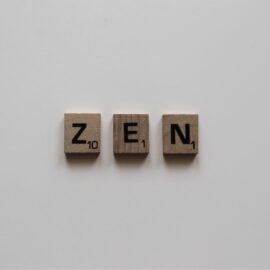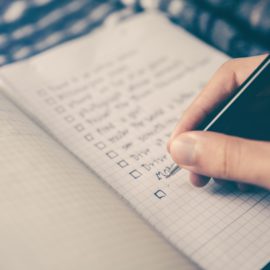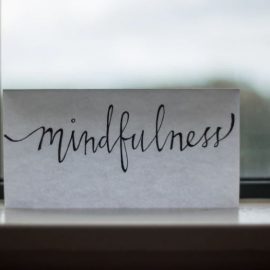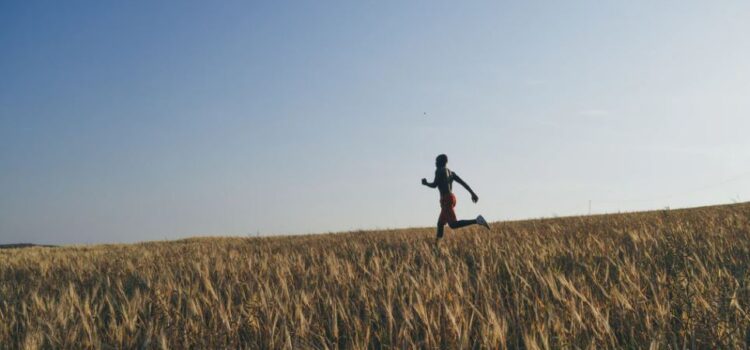
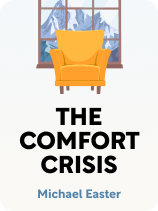
This article is an excerpt from the Shortform book guide to "The Comfort Crisis" by Michael Easter. Shortform has the world's best summaries and analyses of books you should be reading.
Like this article? Sign up for a free trial here.
Do you sit most of the day? Would you like to find an enjoyable and sustainable solution to an inactive lifestyle?
Michael Easter discusses the negative effects of sedentary lifestyles and how to get your body moving the way it’s made to move. Then, he examines the benefits of exercising and provides some context about the types of movement humans are meant to perform.
Read on to learn how to avoid a sedentary lifestyle by moving the way you’re designed to.
Sedentary Lifestyles
Before discussing how to avoid a sedentary lifestyle, Easter first explains how we got here. Our exercise levels have progressively decreased as innovations such as farming, industrialization, and digital technology have made movement increasingly obsolete for our survival. Easter says that three-quarters of American jobs today involve sitting for most of the day. Further, only 20% of Americans meet the national guidelines for exercise (150 minutes per week) and 27% percent of Americans don’t get any exercise. When we don’t use our muscles, they become weaker and more susceptible to injury.
According to Easter, one of the most significant consequences of our sedentary lifestyles is back pain. 80% of Americans suffer from back pain at some point in their life. This is the most common type of pain that people visit doctors for and it’s the number one reason people miss work. Back pain medication is also a leading cause of opioid addiction.
(Shortform note: Although sedentary lifestyles lead to a variety of negative health outcomes, labor-intensive work can also be damaging. In fact, one study found that manual laborers had an 18% higher mortality rate than the general population. They explained that this is likely because labor-intensive jobs typically demand long days of strenuous activity without much rest between shifts. They also tend to involve repetitive movements that overwork certain muscle groups without exercising others. All of this can lead to injury and chronic inflammation. In contrast, healthy exercise routines engage all of your muscles, elevate your heart rate for roughly 20-60 minutes per day, and include rest periods to allow your muscles to recover.)
Remedy: Exercise Like Your Ancestors
Exercise prevents back pain and significantly reduces your chances of all major causes of death in the US, including heart disease and cancer. This is because your body evolved to move. To demonstrate the lifestyle of our ancestors, Easter points to the modern-day Hadza tribe of Northern Tanzania, who live similarly to ancestral hunter-gatherers. According to him, the people of this tribe move 14 times more than modern Americans and burn an average of 40% more calories per pound each day. Easter says the athletic stamina of ancestral hunter-gatherers equaled that of modern, elite, college-level cross-country runners. These ancestors weren’t gifted with unique athletic abilities. They had the same bodies we have, but they were living in an environment with different demands.
| The Exercise Paradox Contrary to common assumptions, research shows that the average Western adult burns about the same number of calories each day as even the most active people—including the Hadza tribe that Easter references. If you’ve tried exercising vigorously to lose weight without success, it’s because exercise doesn’t significantly alter our daily energy expenditure. This flat-rate calorie cost seems to defy the laws of physics, but experts explain that our bodies likely distribute a consistent amount of energy where it’s needed depending on our activity level. For example, if you run a marathon, your body will pull energy from your immune system and other regulatory operations to provide more energy to your cardiovascular system and leg muscles. One major implication of this finding is that sedentary lifestyles aren’t the culprit of obesity— excess calorie consumption is. Of course, sedentary lifestyles lead to other problems (as Easter explains), and exercise is still essential for innumerable reasons, including strength gain and cardiovascular health. But, if you want to lose weight, focus on eating less. |
Easter goes on to explain that we’re built to run long distances and carry objects more efficiently than any other animal on Earth. Our running capabilities developed to help us “endurance hunt,” which essentially means we’d persistently jog down our prey in hot conditions until it collapsed from heat exhaustion. We’re not stronger or faster than most mammals, but we can outlast them all in a long-distance chase. We have several physical features that help keep us cool and run long distances in the heat, such as our ability to produce more sweat than other animals and the bouncy arches in our feet.
(Shortform note: Experts say that persistence hunts were likely performed midday when temperatures were hottest. Although this would’ve been the most uncomfortable time of day to catch food, it would also allow ancient humans to capitalize on their ability to endure heat more effectively than our prey animals. Studies observing modern persistence hunters in the Kalahari desert show that persistence hunts for kudu last two to five hours on average. Research shows that ancient humans could jog down prey in scorching heat for as long as five hours and 40 minutes before needing to rehydrate.)
More often than they ran, our ancestors carried things. Our hunter-gatherer ancestors mostly hauled around tools and animal parts weighing between 10 and 20 pounds, which we in the modern world could probably carry for a few miles. But, our ancestors also sometimes carried heavier loads such as large animal parts from a hunted and butchered carcass. For example, a zebra hindquarter—which would’ve been a common prey animal for ancient hunter-gatherers—weighs roughly 80 pounds. That load of groceries you carried from your car to your home doesn’t seem so bad now, does it?
To exercise in a way that compliments our natural strengths, Easter suggests rucking. Rucking is the act of carrying a heavy pack on your back for long distances. It offers a wide variety of benefits:
- Rucking promotes overall fitness by developing both your cardiovascular endurance and strength.
- Rucking leads to far fewer injuries than running does (for loads of 50 pounds or less). Rucking actually prevents back pain by strengthening your core and glute muscles, which supports healthy posture and stability.
- Rucking is a great exercise to do with others because it allows you to walk at the same speed while you each bear a weight that’s personally challenging for you.
- It’s easy to make rucking part of your daily routine.

———End of Preview———
Like what you just read? Read the rest of the world's best book summary and analysis of Michael Easter's "The Comfort Crisis" at Shortform.
Here's what you'll find in our full The Comfort Crisis summary:
- Why a modern, comfortable lifestyle is bad for health and happiness
- Why discomforts such as being in nature, fasting, and exercising are important
- Tips on how to make discomfort your friend


